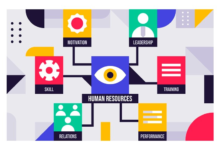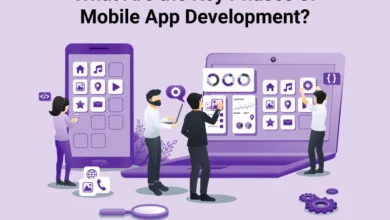
How Push-to-Talk Makes the Transportation & Logistics Industry More Efficient?
Globalization poses enormous challenges such as international tariffs & duties, language barriers, differences in time zones, etc for delivery and logistics companies. Delivering shipments and valuable services to their customers on time without contingencies or disruptions is a constant concern for them. It is expected that their on-field workforce meets ambitious deadlines, however, their drivers’ safety is compromised by distracting communications technologies such as Walkie-talkie devices, Land Mobile Radios, text messages, cellular calls, etc. Using these distractive communication methods causes the drivers to get disengaged from the road and shift their eyes to the devices depicting information they need to consume, taking their hands off of the steering wheel, as well as their focus off of the road, thus compromising their safety while executing on-field work.
It is a non-stop struggle for the on-field workforce to perform their day-to-day chronological tasks despite these mentioned hurdles. The services of these verticals are vital to their end-consumers everyday lives, no matter if that is a bus company offering commutation from one end of the city to another, a trucking company that is responsible for pick-up/delivery of heavy goods from one end of the nation to the other, or the taxi company constantly striving to pick up passengers to and from the airport and their destination.
The key to keeping the business flowing for these transportation and logistics companies is effective, fast, and reliable communication tools/solutions. It is imperative for the dispatch team to stay connected and coordinate with the delivery drivers’ fleet, ride-sharing cab services with their potential passengers/clients, trucking companies with their warehouses, and so on & so forth and without a rapid communication tool in place, it might still be an ongoing struggle.
Table of Contents
Why is legacy communication technology a hurdle for the Logistics and Transportation industries?
Push-to-talk technology has been used by transportation and logistics companies for years now. However, this two-way radio communication has always been hindered by geographic constraints. The traditional Land Mobile Radio (LMR) system can only go ten to twenty miles away from its base station. It is no doubt that with further investments in the frequency range enhancement tools by an organization, the communication gap limited to frequency constraints can be bridged to a limited extent, however, the capital expenditures can touch the roof with the same.
However, with the implementation of Push-to-talk applications into the smartphone, there is no requirement of purchasing the communication assets as it can seamlessly integrate and operate with cellular data, 3G, 4G, or WiFi and can bridge the gap of all the concerns being faced by the transportation and logistics industry and empower them to stay connected with the dispersed on-field workforce no matter where they are or wherever their job takes them.
Which Logistics and Transportation personnel utilize Push-to-Talk, and what are the benefits they reap?
PTT technology empowers the transportation and logistics industry to establish rapid communication with their on-site as well as remote workforces so that the chronological workflow isn’t hindered until a contingency hit.
The on-site personnel in the transportation and logistics industry might connect to their dispersed on-field workforces via push-to-talk applications to ensure that the mission-critical tasks are being executed as anticipated; those professionals include:
- Automobile drivers
- Those who pilot
- Warehouse good dispatchers
- Coordinating officers
- Staff members
- Management
- Managers in charge of operations
- Managers of service providers
The push-to-talk technology allows for rapid two-way communications between numerous people at once (in precise, all the participants invited in a channel, no matter public or private as created by the administrator), as well as a means of performing the following:
- Proof of tasks status sent and received to respective managers by remote workforces.
- The provision of receipts for operational tasks executed so that the managers can pre-assign the later tasks to be executed.
- Maintaining delivery records.
- Taking an inventory of productivity.
- Notifying and alerting of safety hazards.
- Alerting authorities to emergencies and sending SOS signals.
What are the advantages of PTT applications for the Logistics and Transportation industries?
The benefits of Push-to-Talk or PTT applications over tedious and slow communication methods such as standard cellular calls, text messages, legacy walkie-talkie devices commence with the establishment of instantaneous communication. The concerned personnel in the Logistics and Transportation industries can communicate with the on-field or dispersed workforces seamlessly with just the simple push of a button.
It would no longer be necessary to place a dozen phone calls, type long novel messages, and await email responses to exchange relay of information between the team members. Moreover, in the event of an emergency or crisis wherein time is the deciding factor, utilizing a solution such as Push-to-talk apps can offer instant connections via mobile phones despite geographical boundaries.
Listed below are some of the advantages of push-to-talk applications that transportation and logistics companies can utilize in their day-to-day operations to maximize productivity and reduce capital and administrative costs.
Instant Push-to-talk communication over legacy methods
By integrating the push-to-talk application into a smartphone, industry verticals such as Logistics and Transportation can instantly communicate between warehouse dispatchers, management, coordinating officers, managers in charge of operations, and so forth, irrespective of whether the end participants are small groups, targeted groups, or individuals, or moreover customers. The pressing of a single button eliminates other methods of slow and traditional communication, like the long call dialling process & call routing, physical mails, instant messages, and e-mails to establish instant PTT communication among all the individuals mentioned above.
Whenever an emergency or other abnormal circumstances are present, such as inability to contact clients, roadblocks, or crises by on-field personnel, seeking rapid communication, Push-to-talk streamlines immediate relays of information and instructions via the establishment of a continuous connection between mobile devices, no matter if that is a group of participants or single participant. Moreover, in the event, if the incoming broadcast PTT message is missed by the end-participant, the messages are stored on the channels with the playback functionality in the PTT app integrated into the smartphones, ensuring that the important information is never missed nor the productivity is hindered due to miscommunication gaps.
Push-to-talk applications integrated into smartphones can also benefit remote workforce or staff members by allowing their peers and foremen to communicate during events or operations where cell phones would otherwise be inconvenient.
Instant group communication between the foreman and drivers fleet
Push-to-talk applications in smartphones are a sophisticated version of the legacy walkie-talkie devices that offers an additional advantage to the end-user over and above what they used to receive from traditional walkie-talkie devices: being able to communicate instantly with multiple users at once with playback functionality in the event the incoming message is missed by any of the participants (end-users).
With the ability to connect to the remote workforce dispersed across geographies at once via the PTT app, dispatchers can connect seamlessly to the entire fleet at the push of a button. They can moreover send mission-critical information via instant Push-to-Talk messaging to their remote workforces fleet and get acknowledgment of the same. This information can also be broadcasted instantly to all end-users smart devices, regardless of whether it is a Public or Private group. By that same token, this also benefits the organization and the remote workforce, since other slow and tedious means of communication can be eliminated, resulting in a vastly reduced time per communication.
Enhanced productivity
Transporting aggregates or other items that require high-risk handling, operatives, drivers, and command controllers must have reliable, dynamic, and real-time communication in place. The logistics and transportation industry typically relies on outdated Land Mobile Radio (LMR) systems and Walkie-talkie devices, which limit the frequency of communication between the on-site and on-field personnel in addition to being woefully outdated in terms of safety and productivity.
In contrast, with a Push-to-Talk application over LMRs and walkie-talkie devices, industry verticals can not only establish a versatile communication system in place but also track their on-field personnel, make geo-based calls, and get broadcast PTT messages live instantly, thus ensuring that the miscommunication never becomes a hinder on the route of productivity levels.
Unified contact management with fewer miscommunications
Most Push-to-talk applications available in the market facilitate the functionality of a unified corporate directory wherein the industry verticals can store employee contact information under a single directory. This indicates that all the employees working in the organization can access the contact of their peers as and when required via the Unified contact management feature with the assurance of no third-party contact saved or stored. Employee information can be accessed quickly by any personnel associated with the organization to facilitate instant push-to-talk communication as and when required. Moreover, each new business contact can be seamlessly synchronized with the unified corporate directory through the phonebook.
- Integration of media collaboration
In part because the remote and on-the-field workforce will have smartphones in their hands integrated with PTT applications, most PTT apps in the marketplace are more than just a means of communicating; they provide additional functionality beyond legacy walkie-talkies. PTT apps can also permit collaborative media between channels created by the administrator, whether they are public or private. With the use of the single app, remote workers can exchange media files, including proof of work images, parcel delivery verification videos, and data files about client communication for team collaboration and communication.
Closing lines…
In terms of addressing most of the concerns related to communication gaps in the transportation and logistics sector, traditional walkie-talkie technology might be an outdated option for the job, but modern PTT technology with added media and collaboration capabilities will help alleviate the majority of concerns.
NuovoTeam Push-to-talk solution recognizes the realities of the logistics and transportation industry and is continuously developing and enhancing its business communication, productivity, and engagement suite to address these vertical market needs. By seamlessly integrating the NuovoTeam PTT app, one can utilize these administrative features over and above the functionality of Push-to-talk such as tracking of employees’ locations, arranging shift scheduling with clock-in/clock-out functionality, task management, and scheduling, and unified contact management, etc.
NuovoTeam’s suite of productivity, engagement and communication software can be integrated with existing fleets of smart mobile phones and rugged devices, allowing businesses to improve their return on investment without requiring extensive capital expenditures.








